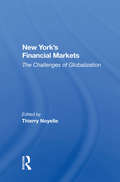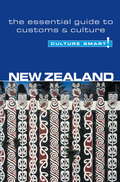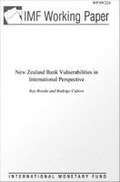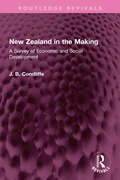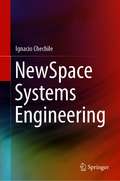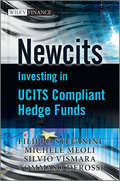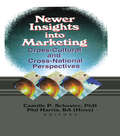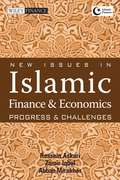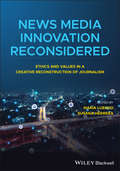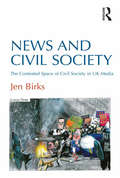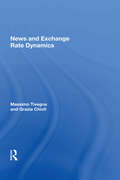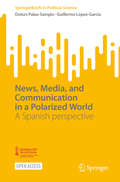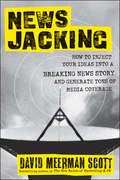- Table View
- List View
New York Times Co.
by Belen Villalonga Chris HartmanThe Sulzberger family owns 20% of the New York Times Co. (NYT) but controls 70% of the board through a dual-class share structure. At the company's April 2006 annual shareholder meeting, Morgan Stanley Investment Management (MSIM) and other investors, holding 28% of the company's stock altogether, withheld their votes for the 30% of directors that they could vote on as a sign of protest against the management of Arthur Sulzberger, Jr. and the dual-class structure that protects him. MSIM later submitted a proposal urging the NYT to subject the dual-class structure to a vote. In evaluating the proposal, Sulzberger feels torn by his responsibilities to three different constituencies: his readers, his family, and all other NYT shareholders.
New York's Financial Markets: The Challenges Of Globalization
by Thierry NoyelleThis book addresses some of the critical issues that New York would need to confront in the early 1990s. It contributes to the policy debates that must take place among industry representatives and local, state and federal officials if New York to retain its role as a leading world financial center.
New York's New Edge: Contemporary Art, the High Line, and Urban Megaprojects on the Far West Side
by David Halle Elisabeth TisoThe story of New York s west side no longer stars the Sharks and the Jets. Instead it s a story of urban transformation, cultural shifts, and an expanding contemporary art scene. The Chelsea Gallery District has become New York s most dominant neighborhood for contemporary art, and the streets of the west side are filled with gallery owners, art collectors, and tourists. Developments like the High Line, historical preservation projects like the Gansevoort Market, the Chelsea galleries, and plans for megaprojects like the Hudson Yards Development have redefined what is now being called the Far West Side of Manhattan. David Halle and Elisabeth Tiso offer a deep analysis of the transforming district in"New York s New Edge," and the result is a new understanding of how we perceive and interpret culture and the city in New York s gallery district. From individual interviews with gallery owners to the behind-the-scenes politics of preservation initiatives and megaprojects, the book provides an in-depth account of the developments, obstacles, successes, and failures of the area and the factors that have contributed to them. "
New Zealand - Culture Smart!
by Sue ButlerCulture Smart! provides essential information on attitudes, beliefs and behavior in different countries, ensuring that you arrive at your destination aware of basic manners, common courtesies, and sensitive issues. These concise guides tell you what to expect, how to behave, and how to establish a rapport with your hosts. This inside knowledge will enable you to steer clear of embarrassing gaffes and mistakes, feel confident in unfamiliar situations, and develop trust, friendships, and successful business relationships.Culture Smart! offers illuminating insights into the culture and society of a particular country. It will help you to turn your visit-whether on business or for pleasure-into a memorable and enriching experience. Contents include* customs, values, and traditions* historical, religious, and political background* life at home* leisure, social, and cultural life* eating and drinking* do's, don'ts, and taboos* business practices* communication, spoken and unspoken"Culture Smart has come to the rescue of hapless travellers." Sunday Times Travel"... the perfect introduction to the weird, wonderful and downright odd quirks and customs of various countries." Global Travel"...full of fascinating-as well as common-sense-tips to help you avoid embarrassing faux pas." Observer"...as useful as they are entertaining." Easyjet Magazine"...offer glimpses into the psyche of a faraway world." New York Times
New Zealand Bank Vulnerabilities in International Perspective
by Ray Brooks Rodrigo CuberoA report from the International Monetary Fund.
New Zealand in the Making: A Survey of Economic and Social Development (Routledge Revivals)
by J. B. CondliffeFirst published in 1930, New Zealand in the Making is an economic history of the democratic experiments in New Zealand. The geography, population, government ownership of public utilities, compulsory arbitration, pensions and all other factors have been covered in detail. The book will be of interest to anyone keen on learning about New Zealand as well as to students of economy, history, agriculture, and government.
New to Big: How Companies Can Create Like Entrepreneurs, Invest Like VCs, and Install a Permanent Operating System for Growth
by David Kidder Christina WallaceSerial entrepreneurs David Kidder and Christina Wallace reveal their revolutionary playbook for igniting growth inside established companies.Most established companies face a key survival challenge, says David Kidder, CEO of Bionic, lifelong entrepreneur, and angel investor in more than thirty startups: operational efficiency and outdated bureaucracy are at war with new growth. Legacy companies are skilled at growing big businesses into even bigger ones. But they are less adept at discovering new opportunities and turning them into big businesses, the way entrepreneurs and early-stage investors must. In New to Big, Kidder and Wallace reveal their proprietary blueprint for installing a permanent growth capability inside any company--the Growth Operating System. The Growth OS borrows the best tools, systems, and mind-sets from entrepreneurship and venture capital and adapts them for established organizations, leveraging these two distinct skills as a form of management for building in a future that is uncertain. By focusing on what consumers do rather than what they say, celebrating productive failure, embracing a portfolio approach, and learning from the outside-in, Kidder and Wallace argue any company can go on offense and win the future. This isn't about a one-off innovation moonshot. It's about building a permanent ladder to the moon.
NewSpace Systems Engineering
by Ignacio ChechileThis book provides a guide to engineering successful and reliable products for the NewSpace industry. By discussing both the challenges involved in designing technical artefacts, and the challenges of growing an organisation, the book presents a unique approach to the topic.New Space Systems Engineering explores numerous difficulties encountered when designing a space system from scratch on limited budgets, non-existing processes, and great deal of organizational fluidity and emergence. It combines technical topics related to design, such as system requirements, modular architectures, and system integration, with topics related to organizational design, complexity, systems thinking, design thinking and a model based systems engineering. Its integrated approach mean this book will be of interest to researchers, engineers, investors, and early-stage space companies alike. It will help New Space founders and professionals develop their technologies and business practices, leading to more robust companies and engineering development.
NewView Capital and Venture Capital Secondaries
by Ramana Nanda Allison M. Ciechanover Shai BernsteinWhile still a general partner at Silicon Valley-based New Enterprise Associates (NEA), Ravi Viswanathan considered the challenges presented by evolving market dynamics in the venture capital space. Startups were staying private longer, which led to limited partners thirsty for liquidity and venture capital funds managing overloaded portfolios. Viswanathan and the senior leaders of NEA orchestrated the purchase of 31 NEA unrealized portfolio companies by the newly created $1.35 billion NewView Capital spinout that he would head. This secondary transaction provided liquidity to NEA's limited partners and reallocated NEA partners' time to shepherd other portfolio companies, while at the same time allowing NewView Capital to reap gains from future exits from a portfolio of diverse, high-quality growth stage technology companies. Now, as he prepares to raise Fund II, Viswanathan acknowledges that the unique circumstances that enabled the launch of Fund I would not be replicable, and he must consider alternative strategies to pursue next. Should he continue to focus on secondary transactions, focus on direct investments, or some combination of the two?
Newcits: Investing in UCITS Compliant Hedge Funds
by Silvio Vismara Tommaso Derossi Michele Meoli Filippo StefaniniDue to their strong regulatory frameworks, UCITS compliant hedge funds have seen a boom in recent years and are considered by many as the only way out for the hedge fund industry after the crisis. <P><P>Newcits: Investing in UCITS Compliant Hedge Funds is a one-stop resource for investors who want to get the best out of their UCITS investments. There is a large and increasing range of UCITS compliant funds out there, but despite their tighter regulation and frameworks, investors still need to understand the risks they are undertaking, the structures of the funds and their differences and similarities to mutual funds and hedge funds. The book begins with an assessment of the financial crisis from the perspective of hedge funds and funds of hedge funds. Then it introduces the UCITS framework and shows how these strategies present a valuable and attractive alternative to offshore hedge funds and funds of hedge funds. The regulatory framework is described in depth, as are the different business models used by asset managers. Finally it looks at current hedge fund strategies such as long/short equity or global macro, and at how these can be integrated into the framework. The book also describes in detail the Newcits industry, discussing the performances, the fee structure, the liquidity and the key theme of "replicability", studying the tracking error volatility of the Newcits funds in comparison with their offshore versions. A discussion of the effectiveness of the regulation and its potential developments concludes the book.
Newell Co.: Acquisition Strategy
by Elizabeth Johnson David J. CollisNewell is a $1.5 billion manufacturer and distributor of low-tech home and hardware products, geared to serve volume purchasers. In 1992, Newell is considering two approaches to expand its current product line with the acquisitions of Sanford Corp., a $140 million manufacturer and marketer of writing instruments and office supplies, and Levolor, a $180 million manufacturer of window blinds. The case focuses on Newell's enduring corporate strategy as a guide for selecting appropriate acquisitions to grow the company.
Newell Co.: Corporate Strategy
by Cynthia A. Montgomery Elizabeth J. GordonIn 1998, Newell Co., a manufacturer of low-tech, high-volume consumer goods, acquired Calphalon Corp., a high-end cookware company, and Rubbermaid, a $2 billion manufacturer of consumer and commercial plastic products. The case focuses on Newell's strategy and its elaboration throughout the organization, as well as the importance of selecting appropriate acquisitions to grow the company. Do Calphalon and Rubbermaid fit with the company's long-term strategy of growth through acquisition and superior service to volume customers? A rewritten version of an earlier case.
Newell Co.: Corporate Strategy
by Cynthia A. Montgomery Elizabeth J. GordonIn 1998, Newell Co., a manufacturer of low-tech, high-volume consumer goods, acquired Calphalon Corp., a high-end cookware company, and Rubbermaid, a $2 billion manufacturer of consumer and commercial plastic products. The case focuses on Newell's strategy and its elaboration throughout the organization, as well as the importance of selecting appropriate acquisitions to grow the company. Do Calphalon and Rubbermaid fit with the company's long-term strategy of growth through acquisition and superior service to volume customers? A rewritten version of an earlier case.
Newell Rubbermaid: Strategy in Transition
by Cynthia A. Montgomery Carole A. Winkler Rhonda KaufmanDescribes the transformation of a company's corporate-level strategy. Begins by laying out the strategy that brought the Newell Co. stunning success for nearly three decades. The highly integrated, internally consistent strategy was tailored for manufacturing and selling a particular genre of products to a particular kind of customer. In the mid-1990s, Newell encountered some shifts in its competitive environment and a subtle erosion in profits. In 1999, the $3.5 billion company paid a 49% premium to acquire the $2.5 billion Rubbermaid Co., in part for its product development process and strong consumer brands. After the acquisition, the profits of the combined enterprise deteriorated at an accelerated rate and the CEO was replaced. In less than a year, a fundamentally new strategy was announced, profits improved, and both Wall Street and major retailers were encouraged. Some setbacks followed, leading to reduced earnings and revised expectations. Exposes students to the pains and struggles of changing a deeply ingrained and long-lived strategy. Also forces them to confront the question of whether the new strategy is the right one and the markers one should seek to prove the case.
Newer Insights into Marketing: Cross-Cultural and Cross-National Perspectives
by Phil Harris Camille P. SchusterThrough Newer Insights Into Marketing: Cross-Cultural and Cross-National Perspectives, you will discover the need for an integration of perspectives as an essential ingredient for successfully managing increased globalization amid an increasing emphasis on cultural identity. In this compelling volume, the authors examine the European as well as the US approaches to cultural understanding. As a result, this book identifies issues that need further study and resolution so you can integrate this new knowledge into your marketing strategy. From this insightful book you will discover new marketing strategy models, including the sequence of steps and description of tools. Most importantly, this book discusses the integration of information required by the use of the tools to provide you with an excellent method for creating unique insights about the marketplace and the potential for competitive marketing strategies. Through Newer Insights Into Marketing you will discover enlightening new ideas to help you improve your marketing strategies by: examining the process of adaptation to build successful relationships in organizational networks among firms with headquarters in different countries discovering what the authors found when they investigated the effects of cigarette advertising and anti-smoking advertising in Australia and Malaysia analyzing case studies of buyer-seller relationships from the telecommunications industry to illustrate buyer-seller adaptations processes at work providing you with the basis for speculation on the forces governing inter-firm adaptation realizing the importance of investigating not only cultural differences by country but cultural differences by other groupings of consumers as well, such as age and socio economic status With Newer Insights Into Marketing: Cross-Cultural and Cross-National Perspectives, you will discover the importance of including cultural differences in your research design to better understand the relationship between globalization and ethnic perspectives. This excellent collection of articles provides you with a framework for acknowledging cultural differences, studying and understanding cultural differences, and integrating that knowledge so you can improve your international and cross-cultural business techniques.
Newfield Energy
by Wei Wang William E. FruhanIn September 2013, Miles Griffin, CEO and chairman of the board of Newfield Energy, prepares to present financial proposals to the board of directors for approval. Newfield (based in Houston, Texas) was a large independent energy company primarily engaged in the exploration, development, and production of crude oil, natural gas, and natural gas liquids. It had experienced declines in earnings and cash flows in recent years because of the decline of natural gas prices and asset write-downs. The proposals to the board, prepared by the CFO, included (1) a press release outlining that the company was planning to divest several natural gas projects immediately, probably at significant book losses; (2) a significant reduction of common stock dividends; and (3) an exchange offer under which the company would exchange up to 20% of its common stocks into newly issued preferred stocks. Griffin was concerned that the breadth and complexity of the proposals might cause investors to worry. This case is ideal for use in first- or second-year MBA courses in corporate finance or capital markets or in a finance course for advanced undergraduates.
Newman's Own, Inc.
by James E. AustinDescribes the creation and evolution of this food marketing corporation. All its after-tax profits are donated to charity by Paul Newman, the distinguished actor and social entrepreneur. The company has grown into a $100 million enterprise and donated cumulatively $89 million to charities. It faces major competitive and organizational challenges. Includes color exhibits.
News Corp.
by Bharat N. Anand Kate AtteaIn 2001, News Corp. is the smallest of the major media and entertainment conglomerates, but it has the broadest global presence. In an effort to establish a major distribution presence in the United States, News Corp. had looked to acquire DirecTV, the largest U.S. direct broadcast satellite provider, in what many observers had considered would be a "transforming acquisition." After 20 months of trying to do so, and the recent competitive offer from Echostar, Rupert Murdoch, chairman and CEO of News Corp., withdrew the company's bid for DirecTV. This case describes how Murdoch has created a global empire from a single newspaper in Australia. News' major assets include its newspaper businesses, film and television production, satellite broadcasting, television channels, and book and magazine publishing. Also describes News' distinctive operating style and Murdoch's role in shaping the corporate culture. News Corp. must now confront three sets of questions. First, how important is it for News Corp. to establish a distribution presence in the United States, and should it pursue a different approach? Second, how should it tackle the deteriorating economics of two of its core businesses: newspapers and network television? Third, what will be the impact of recent repeals of cross-ownership restrictions in the media industry on News Corp.'s competitive position vis-a-vis other major conglomerates?
News Issues in Islamic Finance and Economics: Progress and Challenges
by Abbas Mirakhor Zamir Iqbal Hossein AskariNew Issues in Islamic Finance & Economics: Progress and Challenges provides a review of the main issues and challenges facing Islamic finance. The application of Islamic finance is currently limited to banking. This book starts with an overview of the factors and motives behind the development of Islamic finance. A critical review of issues facing the industry is provided followed by a detailed analysis of areas where further attention is required. The book offers some original thinking on issues pertaining to governance, institutions, public finance and economic development within an Islamic financial system.
News Media Innovation Reconsidered: Ethics and Values in a Creative Reconstruction of Journalism
by María Luengo Susana Herrera-DamasA guide to journalistic ethics for today’s digital technologies With contributions from an international panel of experts on the topic, News Media Innovation Reconsidered offers a guide for the revitalizing of the ethical and civil ideals of journalism. The authors discuss how to energize journalistic practices and products and explore how to harness the power of digital technological innovations such as immersive journalism, the automatization and personalization of news, newsgames, and artificial-intelligence news production. The book presents an innovative framework of “creative reconstruction” and reviews new journalistic concepts, models, initiatives, and practices that clearly demonstrate professional ethics that embrace truth seeking, transparency, fact checking, and accuracy, and other ethical considerations. While the contributors represent numerous countries, many of examples are drawn from the Spanish-speaking media and can serve as models for an international audience. This important book: Explores the impact on the news media from mobile-first, virtual reality, and artificial intelligence-driven platforms Examines the challenges of maintaining journalistic ethics in today’s digital world Demonstrates how to use technology to expose readers to news outside their comfort zones Provides information for discerning truth from fake news Written for researchers, students in journalism and communication programs, New Media Innovation Reconsidered offers a much-needed guide for recreating journalistic ethics in our digital age.
News and Civil Society: The Contested Space of Civil Society in UK Media
by Jen BirksCivil Society has not been more relevant as a concept and a practice since the fall of communism in Eastern Europe. Global events from Tahir Square to Wall St have brought a new relevance and urgency to questions about the boundaries of legitimate dissent and public order policing, the meaning of tolerance in the context of conflicting rights claims, and how we can agree on the shared values of the ’good society’. This timely book examines the representation of civil society in news media, exploring the popular understanding of this contested space in relation to conflicting legitimating frames: as the neo-liberal Big Society, activist political participation, or postmodern apolitical tolerance. With close reference to prominent news stories, including the UK state visit of Pope Benedict XVI, anti-austerity protests and industrial action, police infiltration of the environmental movement, and the Occupy camp at St Paul’s Cathedral in London, News and Civil Society scrutinises different facets of contemporary civil society, civility and civic virtue. A cross-disciplinary engagement with questions of national identity and pluralism, civil liberties and dissent, power and accountability, this book will appeal to those with interests in media, journalism, sociology, citizenship and political studies.
News and Exchange Rate Dynamics
by Massimo Tivegna'News and Exchange Rate Dynamics' proposes an innovative taxonomy of news affecting exchange rates. It establishes a metrics for the impact on exchange rates movements. In doing so it provides the first results of an ongoing research activity on the economic, financial and non-financial determinants of infra daily fluctuations of exchange rates, whose ultimate goal is to explain the formation of market sentiment on one particular currency and the way it changes over time in response to the accumulation of new information. The authors provide a detailed description of the selection criteria of the news and how it impacts exchange rates.
News, Inc.: Brand and Advocacy Journalism Across Media (Routledge Focus on Journalism Studies)
by David O. DowlingTaking a critical historical approach, this book examines the convergence of journalism and advertising industries that has led to the blurring of commercial and editorial functions within news organizations.This book considers the rise of brand journalism as it is broadly conceived across multiple genres and media forms, from brand-produced interactive documentaries such as Google’s “Beyond the Map” to sponsored multimedia features, videos, and podcasts made by news- and non-governmental organizations. Focusing on cases in North America and Europe, Dowling traces the origins of brand journalism and addresses key debates and disruptions brought about by the widespread adoption of the reportorial role by non-profits and corporations. These include journalistic concerns around threats to independence and impartiality and the commodification of reportorial integrity, as well as the reverse perspective in terms of the advertising industry’s adjustment to consumer ad avoidance. This project aims to situate these media products, industrially and culturally, in the context of competition for market share in the digital publishing industry. Ultimately, the study determines how the popularity of branded news content depends on the adaptability of corporate brands in spaces not typically associated with advertising and, in some cases, not yet discovered by competitors.News, Inc. is recommended reading for advanced students and researchers in fields including Digital Journalism, Public Relations, and Marketing Communications.
News, Media, and Communication in a Polarized World: A Spanish perspective (SpringerBriefs in Political Science)
by Guillermo López-García Dolors Palau-SampioThis Open Access book provides an in-depth analysis of the role held by media and journalists in a fragmented and polarized communication ecosystem that faces the uncertainty of major challenges, such as the impact of the disintermediation process, the pressure of simultaneous over- and disinformation forces, and labor precariousness. It discusses these challenges in the context of business model crises and the loss of journalistic quality. Following an interdisciplinary approach, the book further explores the interaction between communication and political and social change processes, their implications, and their consequences in a hybrid media context. The book examines the loss of credibility of traditional media and democratic institutions and discusses how trust can be restored. While doing so, it appeals to the innate link between journalism and democracy, based on the public&’s trust in the capacity of the media to provide quality content that allows citizens to make informed decisions. As the rise of disinformation presents an incredible challenge for conventional media, due to their position of extreme vulnerability, the book finally analyzes how media and professional journalists, who have traditionally held the responsibility of providing quality information, have to address these issues, while facing the disintegration of former business models and social credibility. This book will appeal to students, scholars, and researchers of political communication, journalism, political science, and related fields, as well as policy-makers and professionals interested in a better understanding of the role of media and journalists in contemporary political and social change processes.
Newsjacking
by David Meerman ScottIN A 24/7/365, SECOND-BY-SECOND NEWS ENVIRONMENT, SAVVY OPERATERS REALIZE THERE ARE NEW WAYS TO GENERATE MEDIA ATTENTION.The rules have changed. The traditional PR model--sticking closely to a preset script and campaign timeline--no longer works the way it used to. Public discourse now moves so fast and so dynamically that all it takes is a single afternoon to blast the wheels off someone's laboriously crafted narrative.Enter newsjacking: the process by which you inject your ideas or angles into breaking news, in real-time, in order to generate media coverage for yourself or your business. It creates a level playing field--literally anyone can newsjack--but, that new level favors players who are observant, quick to react, and skilled at communicating. It's a powerful tool that can be used to throw an opponent or simply draft off the news momentum to further your own ends.In Newsjacking, marketing and PR expert and bestselling author David Meerman Scott offers a quick and punchy read that prepares you to launch your business ahead of the competition and attract the attention of highly-engaged audiences by taking advantage of breaking news.Newsjacking will provide you with:Tools that you can use to monitor the newsCase studies and examples that demonstrate how to strike at the right timeInformation on how to make your content available online for journalists to findThe potential risks of newsjackingKeys to developing the real-time mindset required to succeed with the strategies presented in the bookNewsjacking is powerful, but only when executed in real-time. It is about taking advantage of opportunities that pop up for a fleeting moment then disappear. In that instant, if you are clever enough to add a new dimension to the story in real-time, the news media will write about you.

